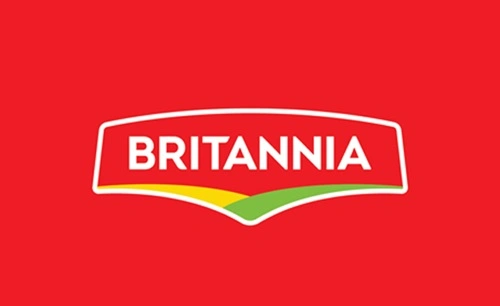Britannia Industries, a flagship of the Wadia Group, remains a dominant force in India’s food and beverage sector. In FY 2024–25, it delivered consolidated revenue of ₹17,535 crore (up ~6% YoY) and net profit of ₹2,178 crore (+2–2.3%), demonstrating resilience in a slow-consumption environment. In Q4 FY25, revenue grew ~9% YoY to ₹4,432 crore and net profit rose ₹560 crore), supported by strategic pricing and robust distribution expansion, especially in rural outlets ([turn0search5], [turn0search3]). Under new leadership of Varun Berry (now MD & CEO since May 2025), Britannia is doubling down on cost-efficiency (~3% revenue savings), innovations in premium and adjacent categories, and deeper rural/e‑commerce penetration.

Strengths
1. Strong Brand Equity with Extensive Distribution Reach: Britannia commands leading market share in the Indian biscuits category (approx. 33% in organized segment) and boasts an expansive distribution network—~2.9 million outlets nationally, including deeper rural penetration.
2. Resilient Financial Performance: Despite macro headwinds and high commodity inflation (wheat, palm oil, cocoa, milk), Britannia grew revenue 5.8% in FY25 and improved net profit by ~2–5% year-over-year. Q4 margins held up well at ~17.7% EBITDA (~19.6% prior year).
3. Cost Discipline & Efficiency Initiatives: Through a strategic cost reduction programme, Britannia delivered ~3% of revenue savings—mitigating input cost pressures while supporting margin resilience and operational leverage.
4. Portfolio Expansion & Innovation in Adjacencies: The company is increasingly diversifying beyond biscuits into cakes, cheese, croissants, drinks, and health/fortified products like Pure Magic, Nutrichoice, and Winkin Cow Grow—all contributing to ~25% of revenue in FY24 with higher growth potential.
5. Strong Balance Sheet & Shareholder Returns: Britannia maintains virtually no net debt (₹2,480 crore in FY25), and consistent dividend payouts (₹75 final dividend; total yield ~1.4–1.75%)—factors that underpin institutional confidence.
Weaknesses
1. Heavy Reliance on Biscuits Segment: Over 80% of revenue still depends on biscuits, making Britannia vulnerable to category saturation and consumer health shifts—limiting flexibility in downturns.
2. Margin Pressure from Inflation: Despite cost-saving efforts, rising commodity prices continue to squeeze margins as price hikes lag inflation cycles, especially in discretionary sub-categories.
3. Urban Demand Sensitivity: Urban and metro consumption has cooled; rural demand recovery remains gradual, restraining upside in higher-margin premium segments unless stimulus or monsoon improves.
4. Capex & Execution Risk: With FY26–27 capex planned around ₹600 crore (greenfield plants, automation, digital), execution delays or poor return on investment may undermine growth and margin leverage.
Opportunities
1. Premiumisation & Health-Focused Brand Extensions: Britannia is pushing into fortified, high-fiber, protein-rich, and millet-based biscuits. Premium launches like Pure Magic and Winkin Cow tap urban wellness trends toward higher margins.
2. Scaling Adjacent Categories: Growth in dairy (cheese, yogurt), bakery (cakes, croissants), and rusk holds upside—adjacencies grew faster than biscuits and support broader portfolio diversification.
3. Deepening Rural & Digital Reach: With rural FMCG contributing 45–50% of sector demand and e-commerce/quick commerce share rising (currently ~4%, poised to double in coming years), Britannia’s expanded reach into Tier-2/3 outlets and D2C channels offers volume acceleration.
4. International Expansion: Export markets in West Asia, Africa, Bangladesh, and Nepal are growing. Britannia’s subsidiaries (e.g., Nepal, Dubai, Kenya) provide a foundation to diversify revenue and reduce reliance on India alone.
5. Digital Supply Chain & Predictive Sales: Britannia plans to implement AI-enabled predictive ordering and Route-to-Market 2.0—enhancing foot-on-street presence, reducing stock-outs, and driving execution efficiency in rural and emerging channels.
Threats
1. Commodity Price Volatility: Cocoa, wheat, sugar, milk, and palm oil inflation remain unpredictable. Unhedged exposure or delayed price pass-through can compress margins sharply.
2. Consumer Slowdown & Price Sensitivity: Given weak discretionary consumption and inflow of smaller local brands, aggressive discounting or price erosion from competitors may impact Britannia’s premium strategy.
3. Intense Competition: Rivals like Parle, ITC, Tata Consumer, and D2C players are aggressively targeting biscuit and bakery categories—putting pressure on market share and requiring constant reinvestment in brand and innovation.
4. Execution Risk in Adjacencies: Scaling dairy or bakery operations requires robust supply chain, product quality, and marketing execution; missteps could result in write-offs or brand dilution.
5. Valuation Prudence: Britannia currently trades at ₹5,400–5,500 stock price), placing high expectations on future growth and execution; any slowdown could hurt investor sentiment.
Future Outlook
Gradual but Steady Recovery in Demand: With commodity prices moderating and rural recovery pacing up (potentially aided by monsoon and election stimulus), Britannia expects modest volume and margin tailwinds into FY26.
Adjacencies Growth to Accelerate: The company aims for its adjacent categories (dairy, cakes, croissants) to grow faster than biscuits—diversifying revenue and increasing margin mix.
Digital & Predictive Execution Boost: Implementation of AI-based retail execution and predictive ordering could enhance productivity and accelerate modern channel growth, particularly in quick commerce and e‑commerce.
Premiumisation & Health Segment Push: Product innovation in protein, millet, high-fiber, reduced-sugar biscuits and dairy could tap rising wellness demand and yield higher margins.
International Market Scaling: Establishing footprint via partnerships, exports, and localized production can unlock new revenue sources in South Asia, Africa, and West Asia.
Capex Execution & Efficiency Gains: Planned expansion in greenfield plants and automation must translate into cost efficiencies and supply chain optimization to support long-term competitiveness.
Maintaining Valuation with Growth Delivery: With elevated multiples, Britannia must consistently deliver revenue growth (~8–10%), margin expansion, and dividend reliability to justify premium valuation ([turn0search5], [turn0news22]).
Britannia continues to be a resilient and iconic brand in a challenging FMCG landscape. Its ability to balance cost discipline, portfolio expansion, rural and digital execution, and international growth will determine whether it sustains leadership or succumbs to disruption and margin pressure. The next 2–3 years are critical in transforming heritage strength into diversified, future-ready growth.